Knossos and the Minoan Mystery
Knossos, the much-visited ruins of a Minoan palace on the Greek island of Crete, is not a UNESCO World Heritage site. However, it is on UNESCO’s tentative list, along with the four other Minoan palace ruins in Crete.
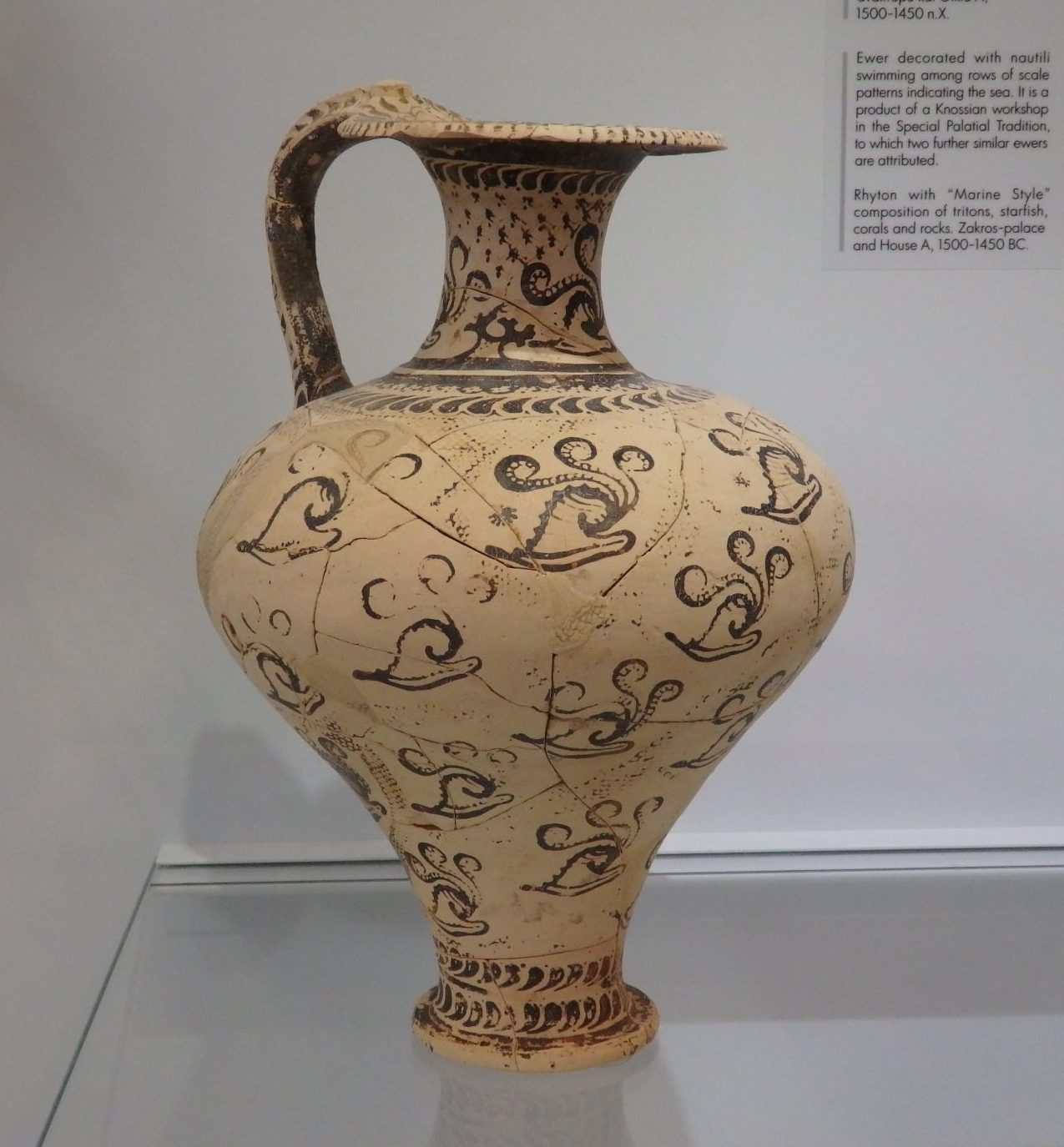
Disclosure: This article contains affiliate links. If you click on one of the links and make a purchase, I will receive a small commission. This will not affect your price.
I was looking forward to seeing these ruins of an ancient civilization, the Minoans, even though I knew next to nothing about them. I loved seeing the Colosseum in Rome, the Western Wall and Masada in Israel, the Great Zimbabwe ruins in Zimbabwe, the pyramids in Egypt. There’s something about the age, the old stones, the ancient dust, that speaks to me. So do the stories and legends: gladiators in the Colosseum, the Masada siege, the mystery of Great Zimbabwe, or Tutankhamun.
In this case, I went in with even more than my usual level of ignorance. Why didn’t we study the Minoans in school? Ancient Egypt, ancient Greece, then ancient Rome, but no Minoans.
Use the map below to book your accommodations near the Knossos ruins. Zoom out to see your options anywhere in Crete:
The Minoans
The Minoan civilization lasted from about 2000 to 1500 BCE. It was a sophisticated culture that, over time, traded with surrounding Mediterranean cultures, improved its technology (e.g. the potter’s wheel), and developed its own alphabet (Linear A). The mystery is: why did this relatively advanced civilization collapse? It might have had to do with the rise of the Mycenaean culture or with a natural disaster like a volcano or earthquake; no one knows for sure.
You might also enjoy my article Rethymnon in Half a Day.

The Archaeological Museum of Heraklion
We first went to the Archaeological Museum of Heraklion before exploring the ruins, and I’m glad we did so. It was eye-opening to learn about how remarkably advanced this civilization was.
An archeology museum is, by its very nature, likely to involve a lot of static items in glass cases. As you may already know, I’m not the most patient person when it comes to looking at such items. An hour or so seems to be my limit, but I’ve become good at skimming the posted information to get the gist of a topic quite quickly.
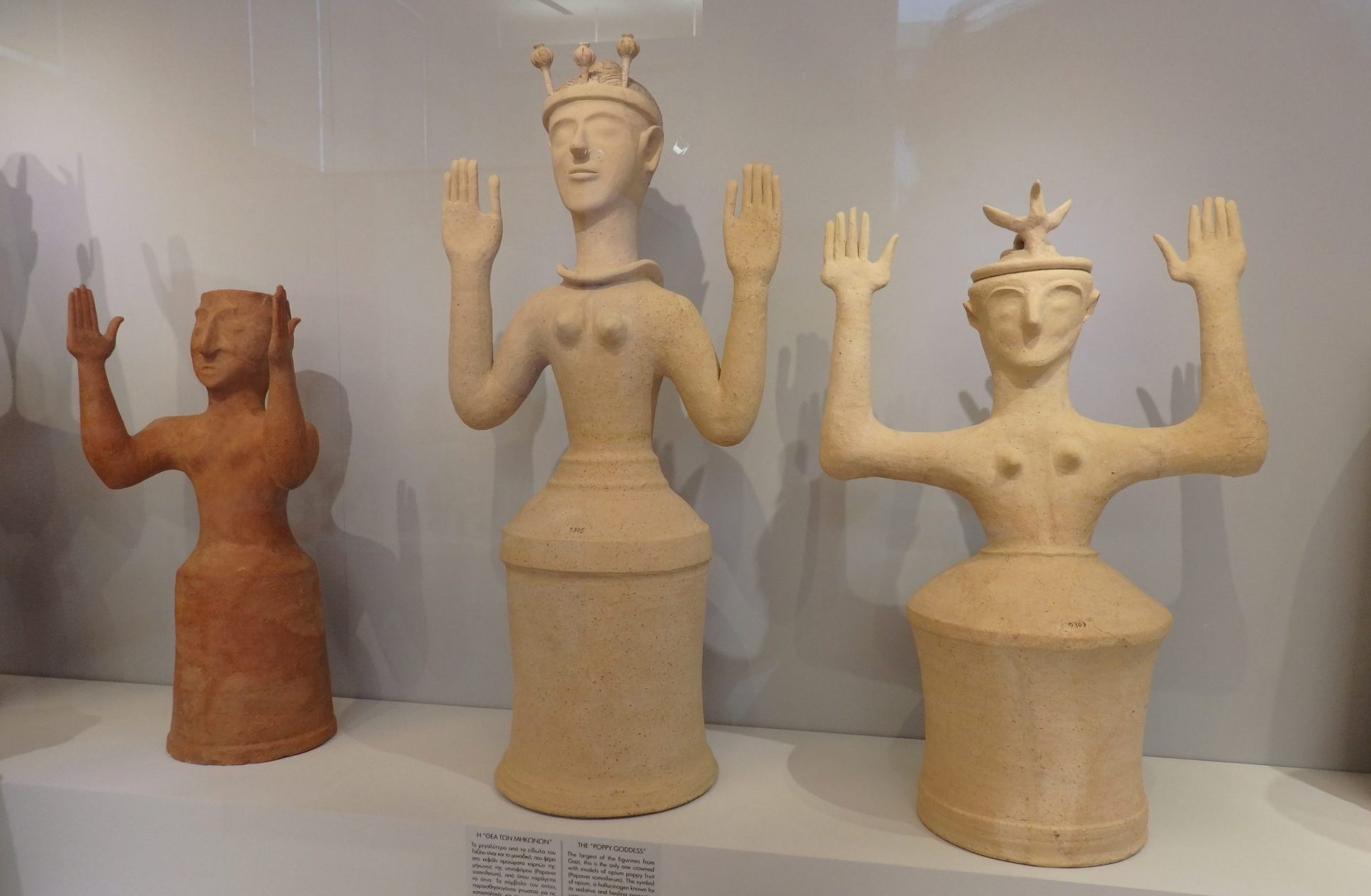
As such museums go, this one is extremely well-designed. For one thing, the lighting is adjusted well, so there is little or no glare on the cases, as I’ve seen in many museums. No squinting to see what’s in there. Items are labeled unobtrusively in Greek and English.
Arranged chronologically, the rooms take visitors past artifacts from the Neolithic period to the height of Minoan civilization, and up to the Roman period as well. Strolling through, stopping when anything caught my attention, the sheer quality of the workmanship and detail that the Minoans achieved so very long ago astonished me. I saw pottery, for example, that would not be out-of-place in a high-end art gallery.
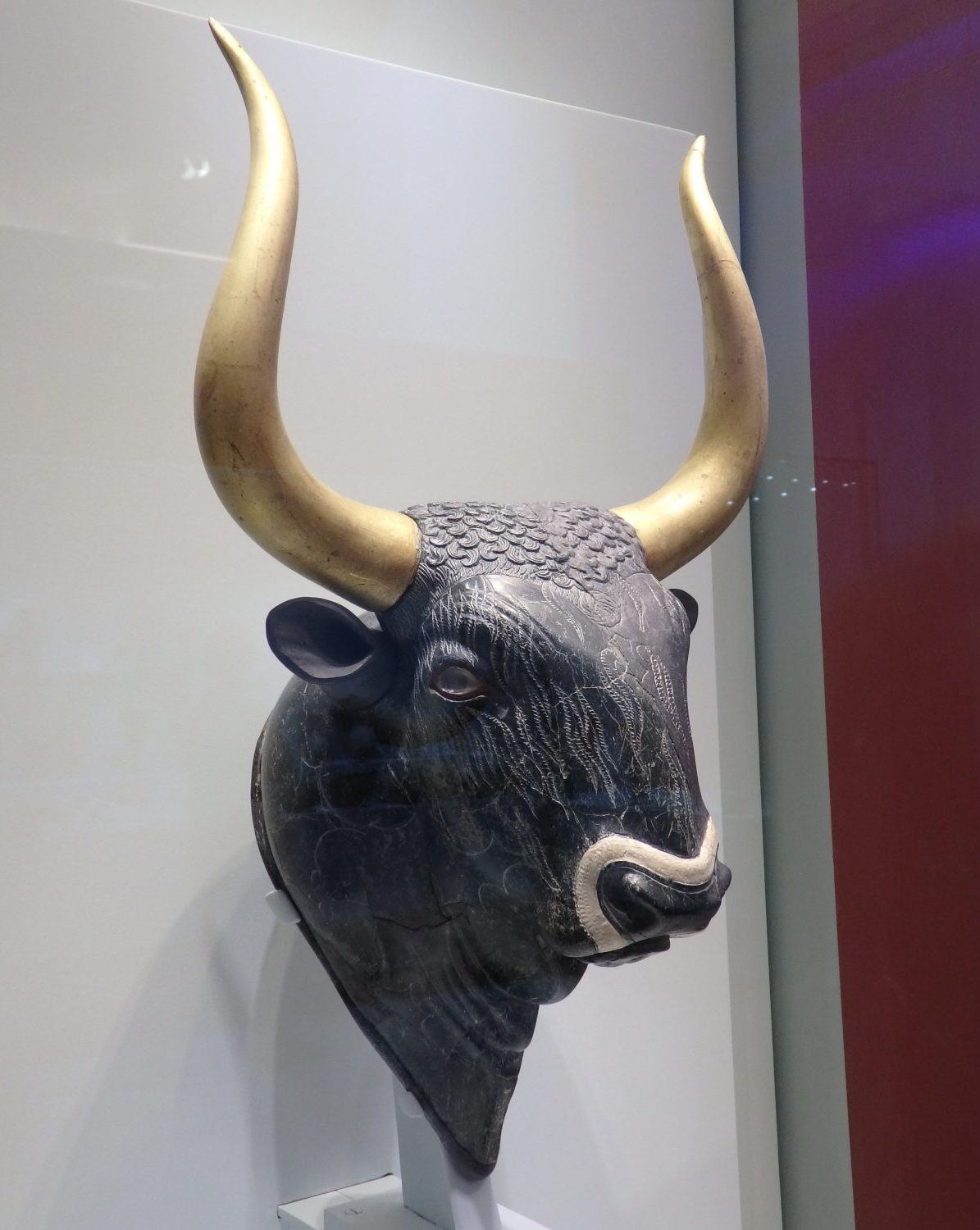
Knowledge questions
I went to Crete to lead a workshop about Theory of Knowledge, a required course in the International Baccalaureate Diploma Programme, so visiting the museum inevitably raised questions about how we know history. Some of the statements on the labeled items made me wonder how archeologists knew what these labels were stating as fact. The double-bladed axes, for example, of which the museum has several examples, were labeled as being used at palaces like Knossos for ceremonial purposes. Were they? How does a conjecture about how the Minoans used an item so far in the past cross the boundary between guess and accepted fact?
This question especially struck me upstairs in the museum, where the frescoes from the Knossos ruins hang. Most of them are extremely fragmentary, so that the majority of the image is painted in to show how archeologists think each fresco looked. How can we know these guesses are correct?

Archaeological Museum of Heraklion: Xanthoudidou & Hatzidaki Str. 1, Heraklion. Open April 1-October 31 Thursday-Tuesday 8:00-20:00 and Wednesday 13:00-20:00; November 1-March 31 Thursday-Tuesday 8:30-15:30 and Wednesday 10:00-17:00. Website.
Knossos ruins
Once armed with some knowledge of Minoan society and its achievements, we were ready for the Knossos ruins, not far away. Ranged down a hillside, the ruins were once a huge palace. Not much is left but the bases of walls, so it’s only possible to get an idea of the outlines of the structures.
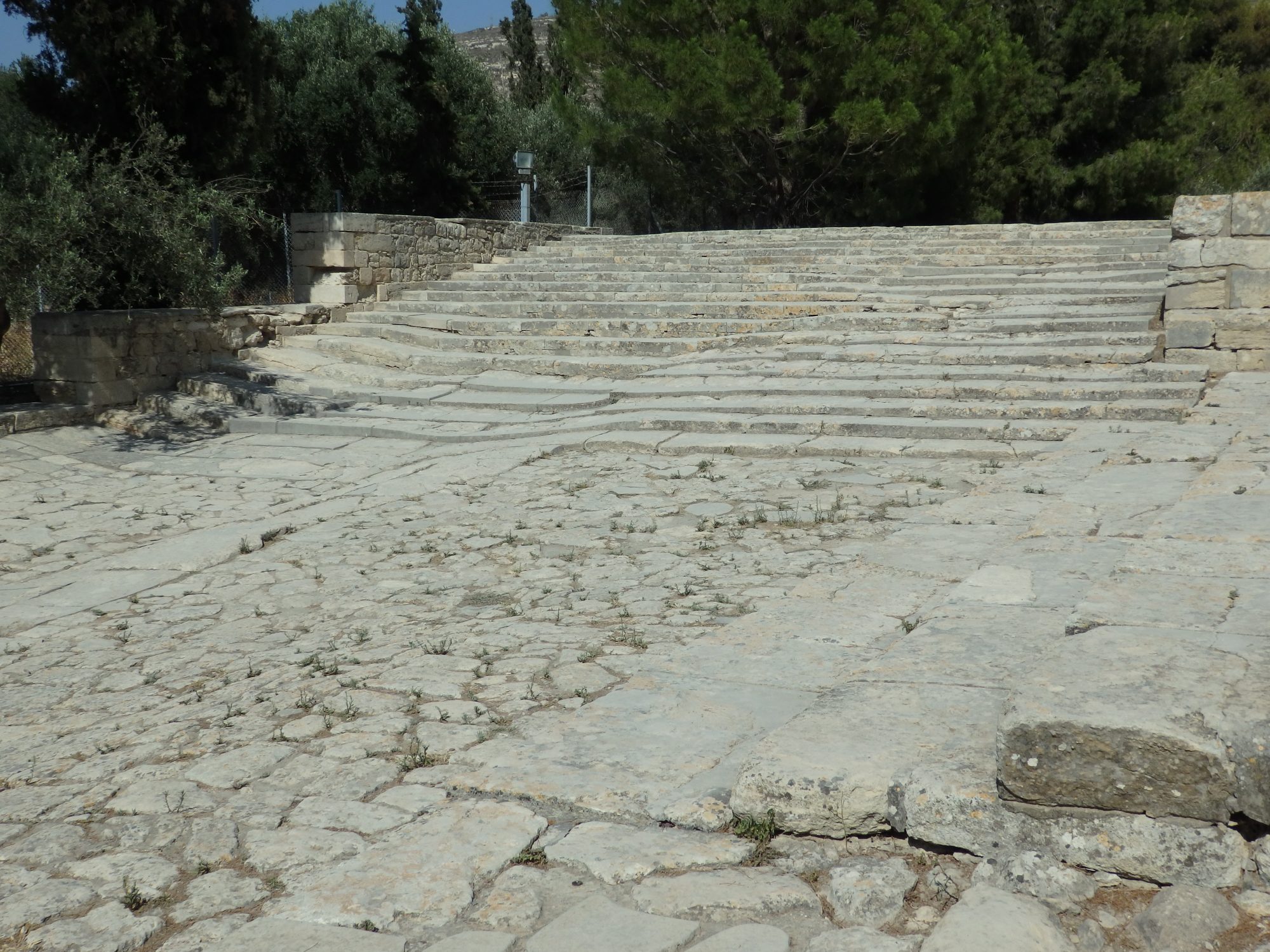
Back in 1900-1905, an archeologist named Arthur Evans excavated the Knossos site. He decided to rebuild some of the buildings, and his reconstructions still stand. The problem is, they’re really just replicas based on guesswork, including new paint and concrete beams imprinted with wood grain. The frescoes and other items he found are all housed in the museum now, and Evans painted replicas of the frescoes in some places.
So what does this tell us about the palace that used to stand on that spot? Perhaps trained archeologists know, but I wondered to what extent Evans’s guesses were correct about what the buildings looked like. And I wondered what gave him the right to make such extensive changes to the site.
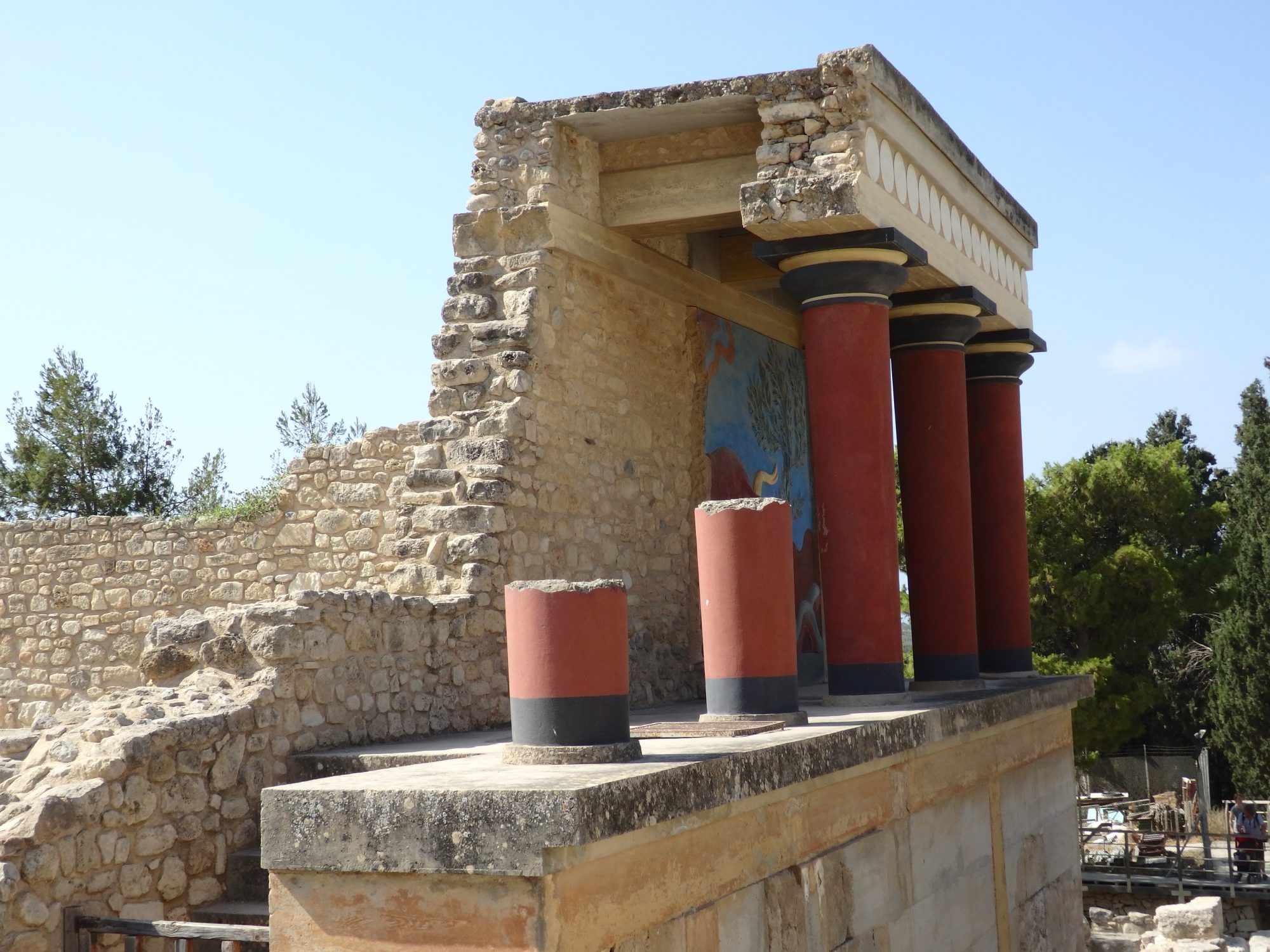
In any case, walking around the ruins and around the small sections Evans rebuilt, I couldn’t get a clear picture of how the place might have loo/ked. It was too ruined and too scattered and I couldn’t get an overview in my head at all. A place like Masada – an equally destroyed ruin – allows more of an overview somehow. I suspect it’s Evans’s reconstructions that obscure that understanding.
The mystery remains, in any case. What happened to the Minoans? Why did they disappear from history? The Archaeological Museum of Heraklion provides a better insight into that mystery than the Knossos ruins.
Knossos: Open daily April 1-August 31 8:00-20:00; September 1-October 31 the hours reduce gradually to 18:00 closing time; November 1-March 31 8:30-17:00. Buy tickets here.
Guided tours of Knossos are available, leaving from a variety of cities in Crete. Click on the image below to see them.
Have you been to Knossos? What were your impressions? Add a comment below!
My travel recommendations
Planning travel
- Skyscanner is where I always start my flight searches.
- Booking.com is the company I use most for finding accommodations. If you prefer, Expedia offers more or less the same.
- Discover Cars offers an easy way to compare prices from all of the major car-rental companies in one place.
- Use Viator or GetYourGuide to find walking tours, day tours, airport pickups, city cards, tickets and whatever else you need at your destination.
- Bookmundi is great when you’re looking for a longer tour of a few days to a few weeks, private or with a group, pretty much anywhere in the world. Lots of different tour companies list their tours here, so you can comparison shop.
- GetTransfer is the place to book your airport-to-hotel transfers (and vice-versa). It’s so reassuring to have this all set up and paid for ahead of time, rather than having to make decisions after a long, tiring flight!
- Buy a GoCity Pass when you’re planning to do a lot of sightseeing on a city trip. It can save you a lot on admissions to museums and other attractions in big cities like New York and Amsterdam.
Other travel-related items
- It’s really awkward to have to rely on WIFI when you travel overseas. I’ve tried several e-sim cards, and GigSky’s e-sim was the one that was easiest to activate and use. You buy it through their app and activate it when you need it. Use the code RACHEL10 to get a 10% discount!
- Another option I just recently tried for the first time is a portable wifi modem by WifiCandy. It supports up to 8 devices and you just carry it along in your pocket or bag! If you’re traveling with a family or group, it might end up cheaper to use than an e-sim. Use the code RACHELSRUMINATIONS for a 10% discount.
- I’m a fan of SCOTTeVEST’s jackets and vests because when I wear one, I don’t have to carry a handbag. I feel like all my stuff is safer when I travel because it’s in inside pockets close to my body.
- I use ExpressVPN on my phone and laptop when I travel. It keeps me safe from hackers when I use public or hotel wifi.



You’re quite right – we never really know what the real story is, do we? There usually are several stories, several viewpoints. Some reveal themselves as the scholarship gets more sophisticated. Others are forever shrouded in mystery.
As I read your post, I kept thinking, who really writes his story? And also, “the danger of a single story” as Chimamanda Adichie warns. There are always at least two sides to any story,
Yep, at least two sides. And also two interpretations of the same story: the freedom fighter/terrorist difference, for example. You could draw incorrect conclusions from the given evidence, and you could also shape those conclusions based on what you hope is the truth.
Rachel, your comments kept me thinking … Seems like what we know about the palace is based on theories of a person who explored it years ago. His opinions are taken in certain way as facts. I have seen pictures of the palace ruins but didn’t know they ware a replica. That is a little bit shocking. But, I guess things are like that in a lot of cases. Haven’t you discovered a lot of things that were incorrectly taught at school? Sometimes it is because the teachings were based on the best texts of that moment (which later become obsolete) or because the teacher introduced his/her own bias.
True. But one of the goals of Theory of Knowledge is to teach kids to question the ‘facts’ they’re given and think about how we arrive at conclusions. In a place like Knossos we tend to defer to the experts–in this case, archeologists–which is fine. But it’s good to stay aware that those experts are just humans trying to draw conclusions from incomplete evidence. By the way, only some parts of the ruins at Knossos are replicas. A lot of it just looked like low walls that had been stabilized a bit.
When I walk around a ruined site I try to just appreciate what I’m seeing even if I don’t understand it. There are always some points of reference that we do understand. I do appreciate the odd board with snippets of information or hearing about a feature in advance and locating it. I love exploring ruins in Turkey because you can just potter around doing just that – exploring.
I’ve never been to Turkey, but I know what you mean. I did glean some interesting “facts” from the boards posted here and there. I guess I needed more complete prep work to understand what I was seeing, and to make a judgement as to whether the reconstructed parts were accurate or not.
Knossos was one of the few historic places we’ve visited that didn’t knock our socks off. After learning that Evans had pretty much rebuilt the place as he envisioned it to be, we just didn’t quite ‘get it’ . On the other hand, we loved Heraklion’s museum (it was still under construction) so many of the displays weren’t available but still the history of the Minoans is one (like you said so well) that I wish I had studied in school. Great photos!
Thanks, Jackie! Yes, if you want “better ruins” there are lots of other choices. I’d recommend many of the temples and other sites along the Nile, for example, or in other parts of Greece or in Italy. Pompeii, for example, is amazing.
Archaeologists seemed to have had a lot more leeway back then as to what they could or couldn’t do. Maybe Evan’s reconstructions weren’t accepted with open arms by the archaeological community, but he could have been long gone by the time anyone criticized what he took upon himself to recreate. The Minoan culture sounds fascinating and I would love to visit the museum. Thanks for hosting this week. #TPThursday
Hi Nancie! Yes, I think if you dug up a site you were pretty much allowed to do what you wanted. And it’s easy to judge it with 20/20 hindsight.
Hello, this is an interesting take on Knossos, a place I visited too many years ago to be in a position to comment on your specific points. As a general comment though, I think that what is portrayed as fact by archaeologists in museums is usually the gist of numerous findings. For example, a room may be identified as being used for ceremonies by several indicators and then, how many double-bladed axes do you need to find in ceremonial rooms to conclude they had a ceremonial purpose? As a Greek, I am however baffled by a detail in the beginning of the post: did you in fact visit a Colosseum in Athens? Because the only Colosseum I know is in Rome. Unless you refer to some other venue we call by a different name…
Oh, dear! I meant Rome! I’ll change it right now! Thank you!